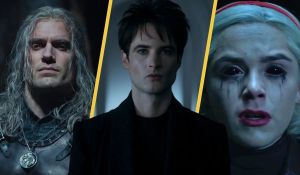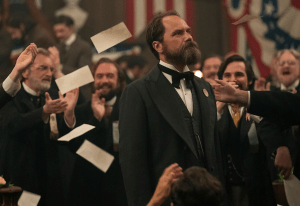Not every fantasy is about magical kingdoms, heroic warriors, and happy endings. There’s a darker (and far more interesting) side of the genre. Here, magic comes with a price, worlds are hostile, and creatures don’t play by moral rules. Everything feels eerie, twisted, and heavy. These are stories that blend the real and the supernatural without promising comfort, digging into the fear, pain, and fascination that exist between the two. It’s the kind of cinema that makes you question whether escaping reality is really better than facing the nightmare. Within what fantasy is “supposed” to be, this subgenre stands out because it challenges the need to tune out reality (and sometimes completely flips it on its head).
Videos by ComicBook.com
This list brings together 10 movies that capture the best (and weirdest) sides of dark fantasy. Tragedy, moral ambiguity, oppressive atmosphere, blurred lines between the real and the unreal, tormented characters, gothic visuals — no matter the angle, this genre always finds new ways to keep its audience on edge.
10) Van Helsing

A lot of people might not like it, but Van Helsing is iconic, mostly because it understands that excess can be a style on its own. The legendary monster hunter facing off against Dracula, Frankenstein’s creature, and the Wolfman in a shameless mix of action and fantasy is still a fan favorite (and honestly, a gateway for anyone curious about the darker side of classic horror). The story follows Van Helsing (Hugh Jackman) as he’s sent by the Vatican to hunt down evil in Transylvania, resulting in a full-blown CGI spectacle — dated, sure, but with a charm that’s hard to ignore.
Is it messy? Absolutely. But that’s part of the fun. The movie never pretends to be deep, and that’s exactly why it works as a cult favorite. It delivers monsters, chaos, and gothic flair with zero irony. Despite its cold critical reception, Van Helsing has aged as a fascinating experiment from a time when Hollywood still thought it could reinvent classic horror with blockbuster energy. Today, it fits perfectly as a piece of dark fantasy (even if it’s completely absurd from start to finish).
9) Underworld
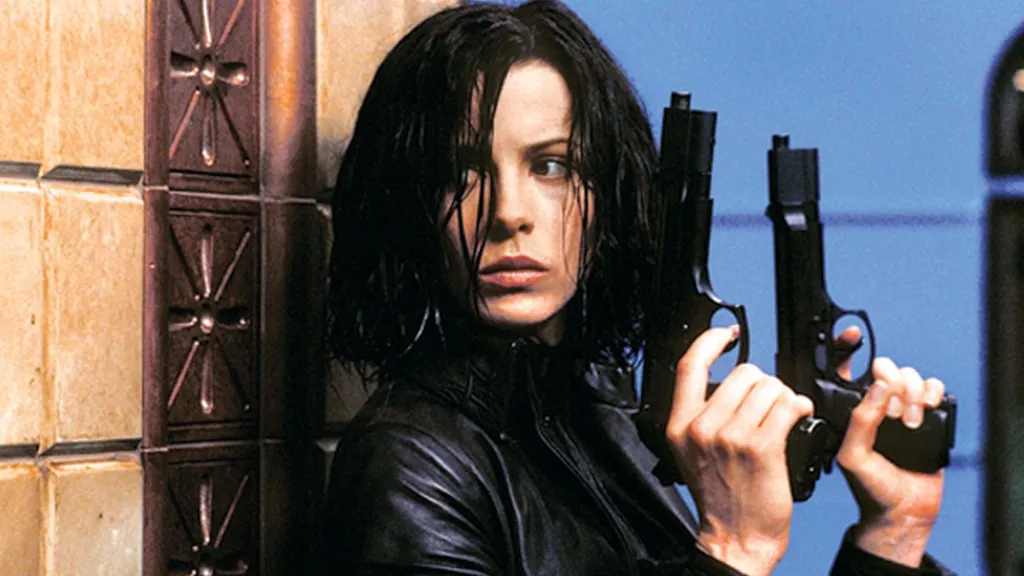
Before Twilight took over the vampire craze, Underworld had already laid down the blueprint — not for horror in the traditional sense, but for modern dark fantasy. The story follows Selene (Kate Beckinsale), a vampire assassin locked in an endless war against werewolves, who ends up uncovering dark secrets about her own bloodline. It’s a film that takes itself very seriously, building a unique tone and aesthetic: the metallic blue color palette, the leather coats, the dual-gun action scenes — all of it crafted a visual identity that’s still instantly recognizable decades later.
Sure, the script is more about style than depth, but Underworld (which quickly became a franchise) knows exactly what it wants to be: pure dark entertainment. It blends gothic horror mythology with a cyberpunk edge to create a world where ancient legends collide with gun-fueled spectacle. The sequels were a bit inconsistent, but the first film remains the most cohesive and iconic of the bunch. It doesn’t overreach; it just delivers on its promise, and that’s why it works.
8) Conan the Barbarian

Who hasn’t heard of Conan the Barbarian? It’s violent, strange, and completely faithful to that raw ’80s dark fantasy spirit. The story follows one of the genre’s most iconic characters on a bloody quest for revenge against the sorcerer who murdered his parents. It’s a brutal journey from slavery to glory where Conan (Arnold Schwarzenegger), enslaved as a child, grows up surrounded by violence and eventually becomes a fearsome warrior. After earning his freedom, he sets out on an odyssey with companions like the thief Valeria (Sandahl Bergman) and the archer Subotai (Gerry Lopez).
What makes it fascinating is its heavy atmosphere of mysticism and paganism, turning the film into something that feels almost ritualistic. But at its core, Conan the Barbarian is pure physical cinema. The world it builds doesn’t feel like fantasy; it feels tangible. And Schwarzenegger doesn’t need long speeches; his presence alone carries a primal power that defines the movie. This isn’t fun fantasy; it’s brutal, dead-serious, and sometimes uncomfortable. It’s dark fantasy in its purest form: the hero isn’t noble, the world offers no light, and vengeance is the only thing that matters.
7) Beetlejuice
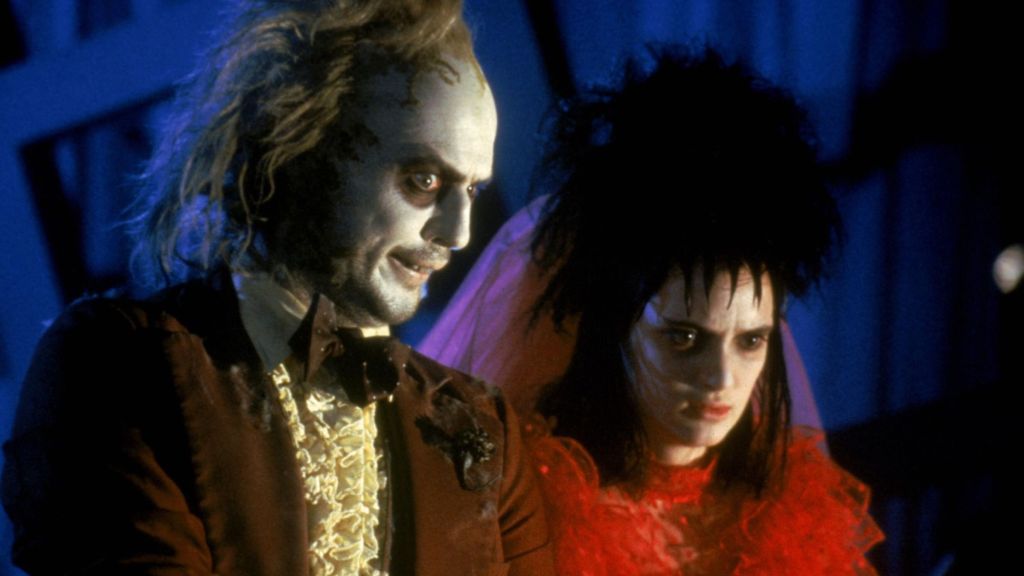
This is one of those cases where a dark fantasy doesn’t look like a dark fantasy, mostly because it’s a full-on comedy. One of Tim Burton’s best films, Beetlejuice turns death into something bizarre and irresistibly entertaining. The story follows a recently deceased couple trying to scare off the new owners of their home with help from a chaotic “bio-exorcist” — Beetlejuice himself (Michael Keaton). It’s an absurd premise, but it makes perfect sense in Burton’s world, where the morbid and the ridiculous blend so naturally that you can’t look away.
Beetlejuice stands as one of the pillars of modern dark fantasy because it flips the concept of fear on its head, turning the afterlife into a grotesque carnival. Besides, its aesthetic is unmistakable: gothic, colorful, and just weird enough to be unsettling. The movie is unpredictable, weirdly beautiful, and completely unchained from cinematic convention. And Beetlejuice as a character? Still one of the most beloved creations in Burton’s career. It’s the kind of chaos that actually works, which explains the long-lasting appeal of the original, the success of the sequel, and the hype for what’s coming next.
6) Legend

After Blade Runner and before Gladiator, Ridley Scott took a dive into dark fairytale territory with Legend. What’s fascinating is how divisive it remains: some dismissed it as a hollow spectacle, while others praised it as an underrated visual gem. The story follows Jack (Tom Cruise) on a quest to save Princess Lili (Mia Sara) and stop the Lord of Darkness (Tim Curry) from plunging the world into eternal night. It’s a classic fairytale setup, but filtered through Scott’s moody, atmospheric style — every frame looks like it was painted by hand, dripping with fantasy and menace.
Legend hasn’t aged perfectly, mostly because its simple plot doesn’t always match the weight of its visual ambition, and the pacing can feel slow. Still, it’s endlessly fascinating. The performances stand out, especially Curry, who completely redefines what a demonic villain can be. The movie might feel dated, but it’s a reminder of why the fantasy genre endures: because it dares to turn the ordinary into something extraordinary. This was Scott at his most experimental, turning fantasy into pure visual art, even if it meant sacrificing a bit of storytelling along the way.
5) Sleepy Hollow
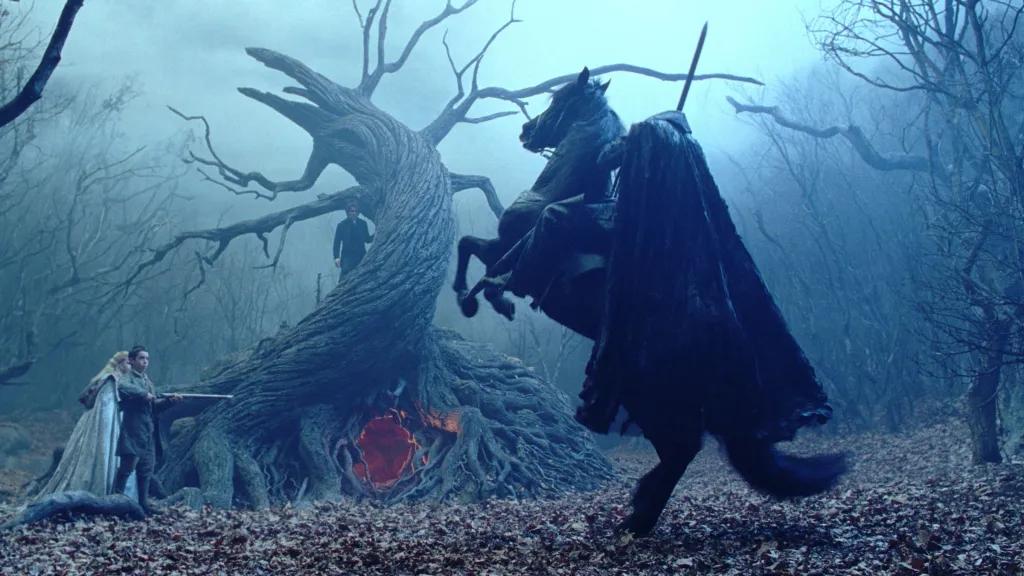
Another Tim Burton entry, Sleepy Hollow is one of his most underrated projects — and one of those dark fantasy films everyone should watch at least once. The story follows Ichabod Crane (Johnny Depp), an investigator sent to a small village to solve a string of decapitations, only to encounter the infamous Headless Horseman. It’s a perfect blend of horror, fantasy, romance, and mystery, all wrapped in stunning art direction and cinematography that make the entire movie feel like it’s trapped in a perpetual fog.
Stylized and unapologetic, Sleepy Hollow leans fully into its darkness because you never quite know what’s lurking around the corner. It has the pacing and atmosphere of a classic horror film but with a lavish, almost baroque aesthetic. The violence is theatrical, the humor is bone-dry, and the mood is pure immersion. It stands as one of the most cohesive examples of dark fantasy (and one of Burton’s most complete visions), a gothic modern fairytale drenched in blood and unmistakable personality.
4) Crimson Peak
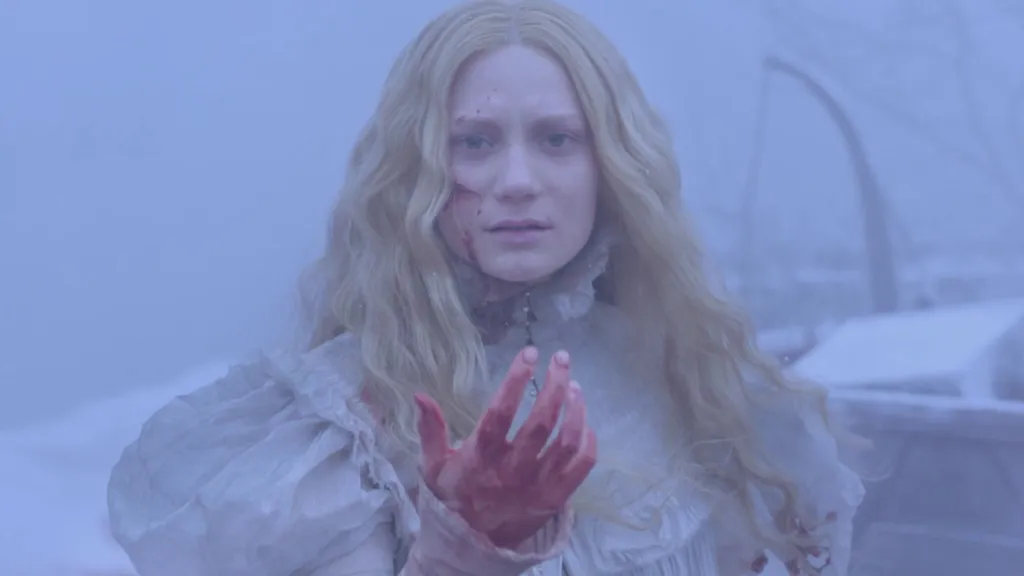
At first glance, Crimson Peak might look like just another gothic romance, but it’s much more than that — especially coming from one of fantasy’s most distinctive directors, Guillermo del Toro. The filmmaker has never hidden his love for haunted houses and tragic love stories, and this movie feels like his ultimate love letter to that tradition. The plot follows Edith (Mia Wasikowska), a young writer who moves into the crumbling mansion of her new husband, Sir Thomas Sharpe (Tom Hiddleston), only to uncover dark secrets. Visually, it’s breathtaking — a romantic nightmare wrapped in beauty and decay.
The story drips with mystery, ghosts, blood, and that truly gothic atmosphere, functioning more as an emotional and aesthetic experience than a straightforward horror. Crimson Peak is a hauntingly beautiful dark fantasy, full of metaphors and deliberate symbolism from the use of color to the mansion itself. It’s not a movie built for explanations or scares. Instead, it’s pure Del Toro; it’s a film meant to be absorbed, contemplated, and appreciated for its eerie elegance.
3) Coraline
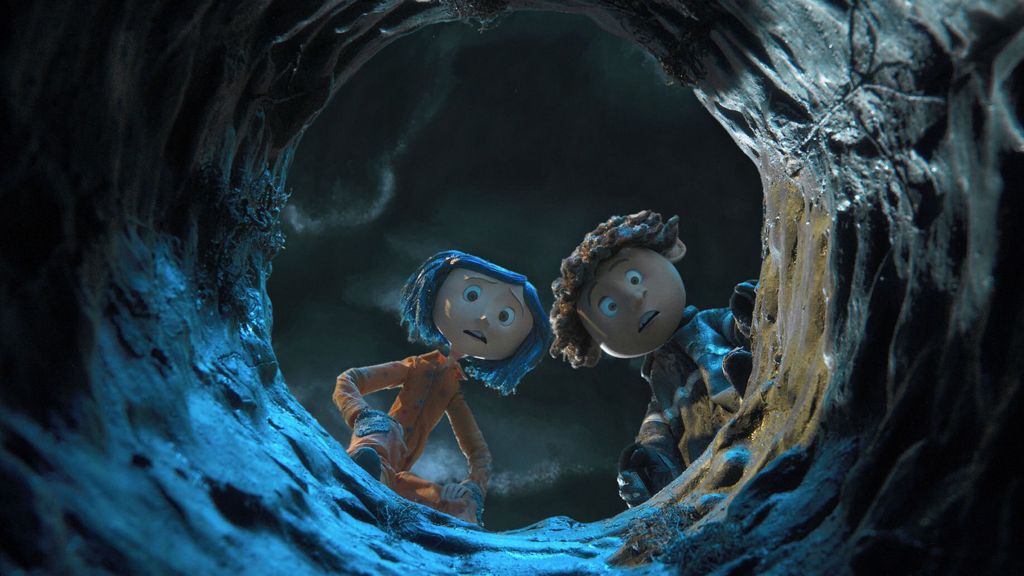
This list wouldn’t be complete without an animated entry, and when it comes to dark fantasy, Coraline is impossible to ignore. Upon release, it was widely praised and remains a favorite years later. The story follows a young girl who discovers a dark, alternate version of her home, where her parents have buttons for eyes. It’s an unforgettable premise on its own. The stop-motion animation is flawless, and the atmosphere feels suffocating in the best way possible, turning what looks like a whimsical adventure into something really unsettling. At its core, it’s a fable about curiosity, loneliness, and the danger of wishing for a perfect life.
Coraline is the kind of film that stays with you long after it ends. And what makes it truly dark fantasy is that the horror doesn’t come from monsters, but from the desperate desire for a flawless reality and the cost of believing in it. Besides, The Other Mother stands as one of the most memorable villains in the genre, being a chilling symbol of manipulation disguised as love. Equal parts enchanting and terrifying, this movie remains one of the boldest and most haunting animated films ever made.
2) The Dark Crystal
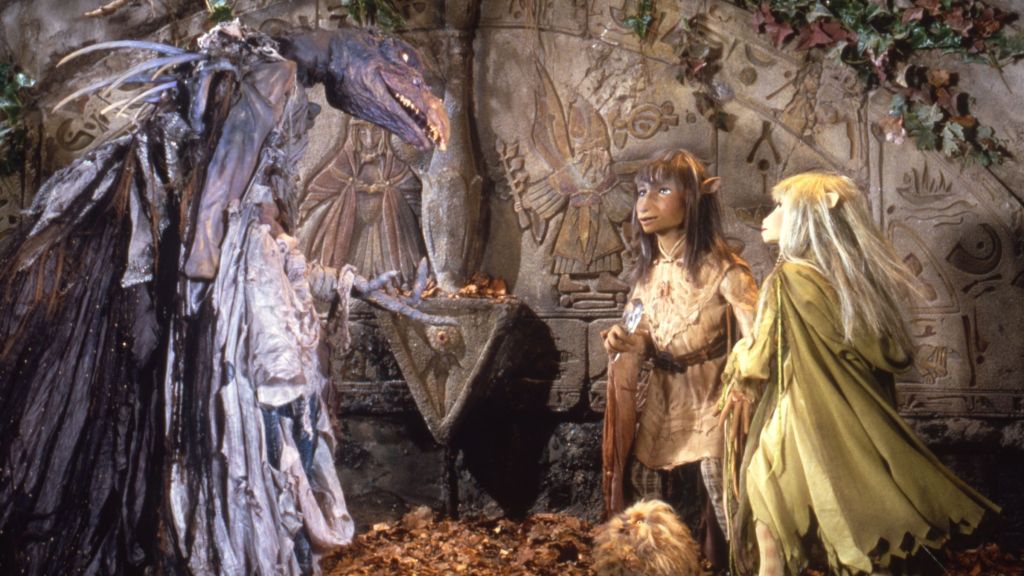
The “weird vibe” definitely lives here, and that’s exactly what makes The Dark Crystal stand out. The film follows Jen, a creature known as a Gelfling, on a quest to restore balance to a world ruled by the cruel Skeksis. Sounds like standard fantasy fare, right? Except everything is done with puppets and practical sets, which makes sense, considering it came from The Muppets creator Jim Henson. The result feels almost ritualistic, like watching an ancient myth unfold. But nothing about it is comforting: every creature and every bit of scenery feels alive in a strangely unsettling way.
The Dark Crystal isn’t light, and it’s definitely not for kids. It’s dark, philosophical, and visually overwhelming. This is fantasy stripped of charm with no charismatic heroes, no humor, and no real relief. Instead, it dives into decay, power, corruption, sacrifice, and rebirth through heavy symbolism, putting it closer to The Lord of the Rings than anything from Henson’s usual world. It’s entertainment, yes, but it’s also art — and one of the most distinct, ambitious examples of dark fantasy ever put on screen.
1) Pan’s Labyrinth
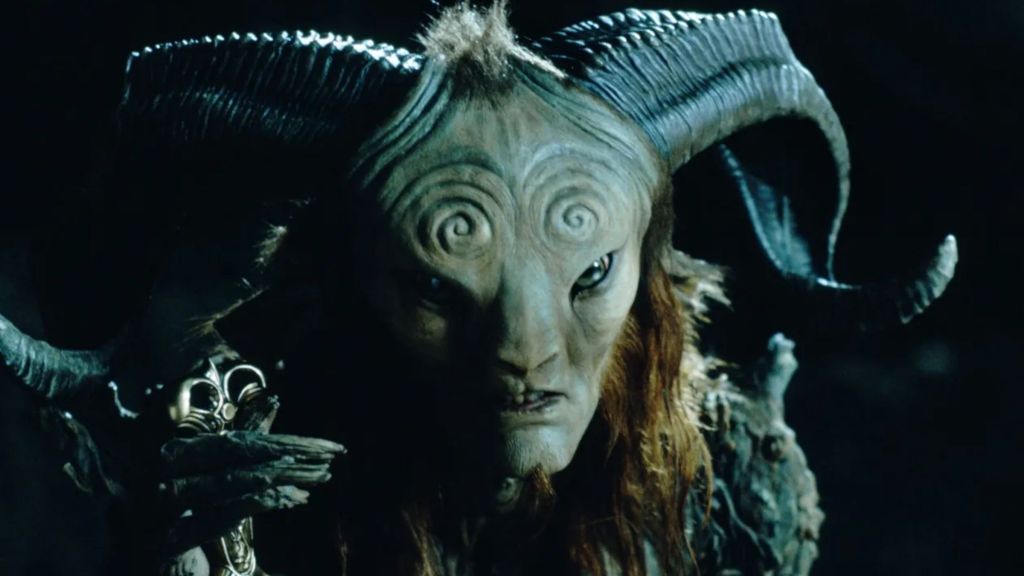
Few films capture the essence of dark fantasy quite like Pan’s Labyrinth. This is a stunning piece of filmmaking that no one will ever top. Another masterpiece from Del Toro, it weaves fairy-tale elements with historical horror in a devastating story about Ofelia (Ivana Baquero), a young girl who escapes the brutality of Francoist Spain through a world of strange creatures and mystical trials. It’s a story about escape, but also a tragedy about the loss of innocence — and that’s where its brilliance lies. The movie understands the power of fantasy not as an escape, but as a mirror.
Every creature and every test reflect the oppressive reality surrounding the protagonist. The fantastical here becomes a language to explore obedience, power, and the ability to preserve imagination even when the world tries to crush it. It’s emotional and beautiful, but just as disturbing and cruel. Pan’s Labyrinth stands as the pinnacle of dark fantasy because it understands that darkness comes from the real world. It’s a reminder that the truest human horrors can coexist with the most sublime of dreams. No other film defines the genre better than this one.
What do you think about these movies? Got a favorite? Or maybe one you think definitely deserves a spot on this list? Let us know in the comments!

